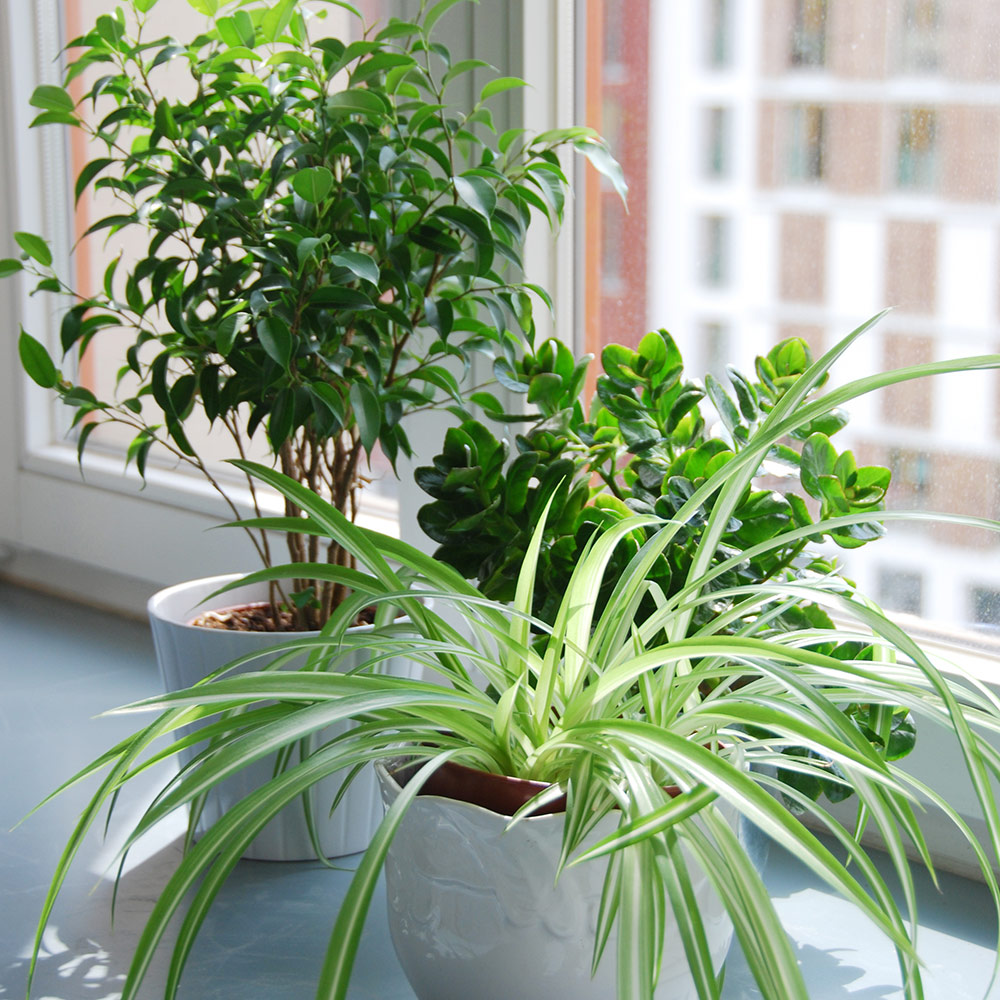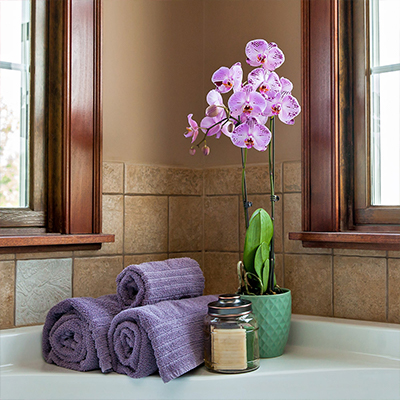Tips for Indoor Gardening Success
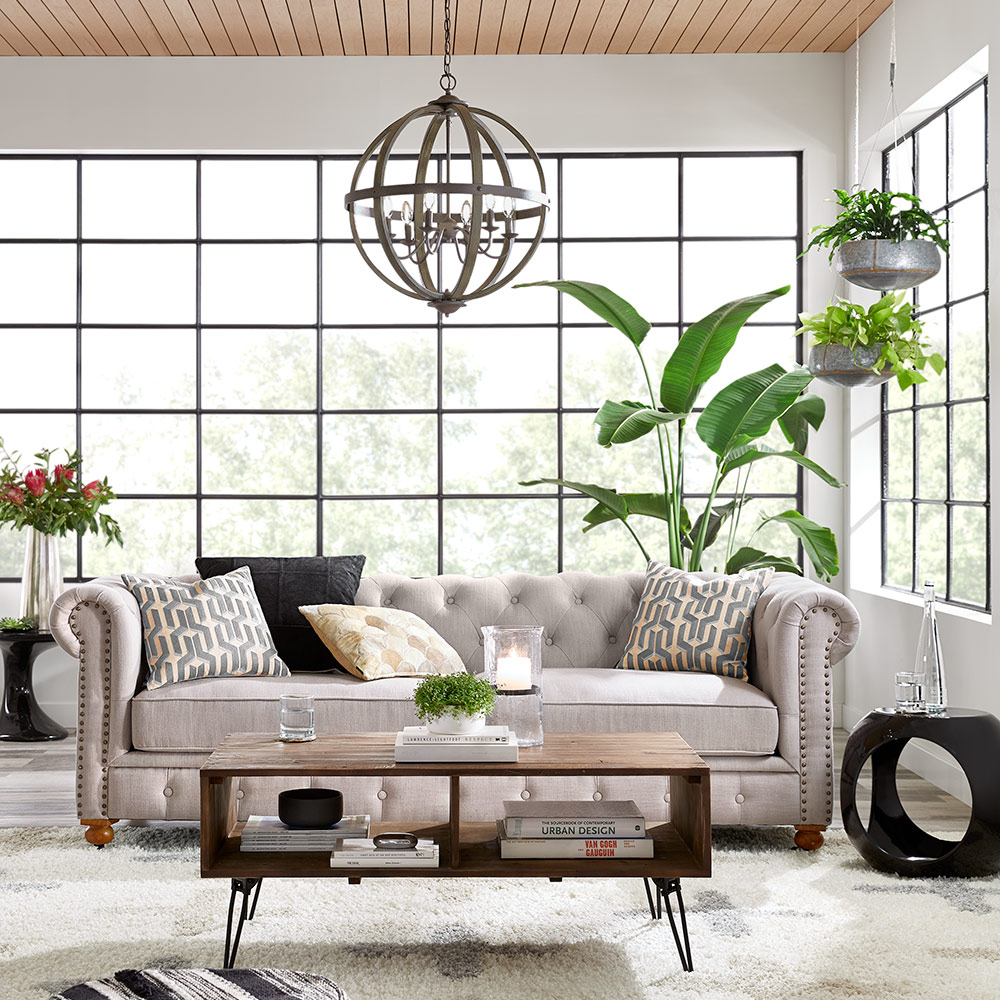
Last updated September 7, 2023
You may be an experienced outdoor gardener, but once you bring plants indoors, you learn that growing plants inside your home has its own set of rules.
Plants are meant to grow outside, and while many can adapt to your living space, just like with pets and fellow humans, you’ll be more successful when you make accommodations for their needs.
Follow these tips for indoor gardening success.
Table of Contents
Find the Right Place for Your Houseplants
Choose Low-Maintenance Houseplants
Choose the Right Container and the Right Soil
Start a Houseplant Family
Misting and Fertilizing Indoor Plants
Accessorize Your Houseplants
Find the Right Place for Your Houseplants
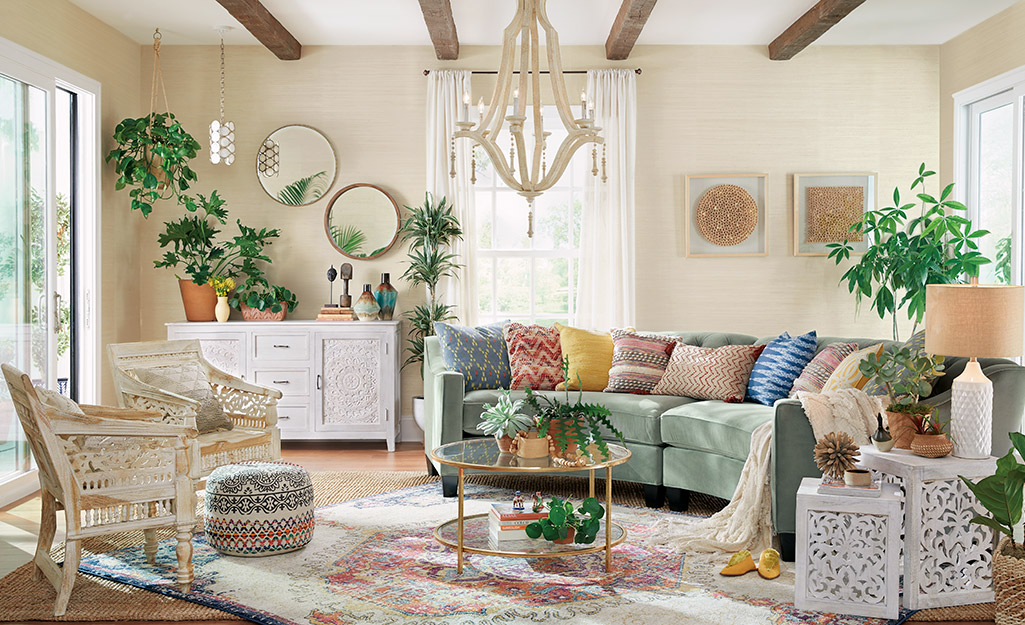
Just like you measure for a sofa before going furniture shopping, you need to know the light in your space before you pick your houseplants. The good news is that most plants growing indoors don’t need bright, direct sunlight because they’re tropical plants used to filtered light from their home on the rainforest floor.
Observe the light in your home and make note of the total hours of sunlight from the windows. Once you know the best spots in your home for plants, you can start selecting plants.
Read plant tags and online product descriptions to learn about the best plants for your space.
- Low light is less than 4 hours of sun
- Medium light is 4 to 6 hours of sun
- Bright light is 6 or more hours of sun
You can bring more light into your space with grow lights. Learn more about using grow lights in your home.
Choose Low-Maintenance Houseplants
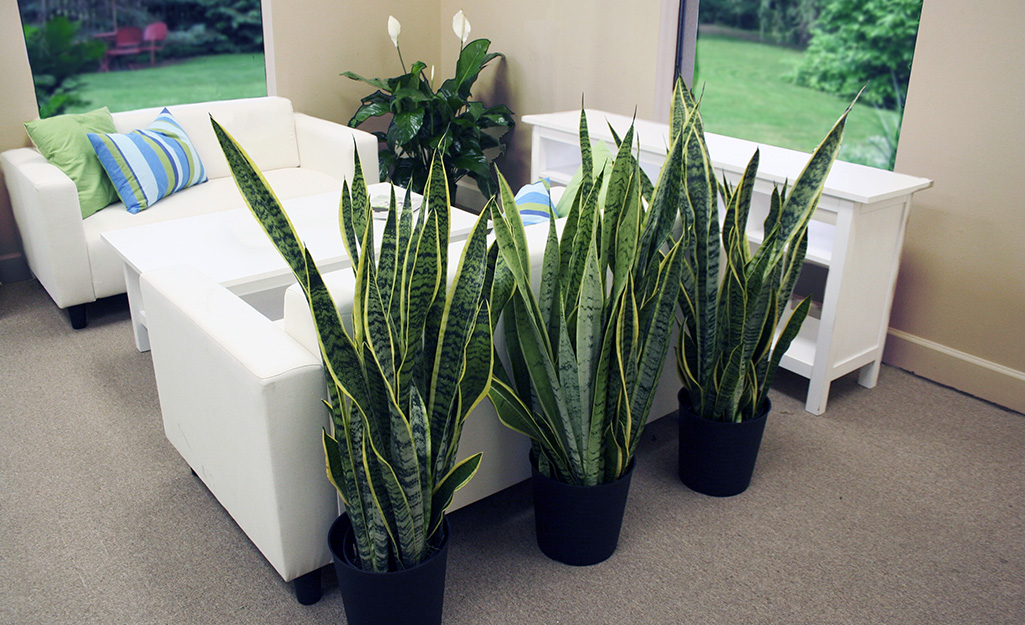
Even if you don’t have bright light in your space, you can still own houseplants. There are plenty of options for low-light spaces, like trendy sansevieria, colorful aglaonema and graceful peace lily.
Low-light house plants thrive in planters in north-facing or partly shaded windows, and some can be grown as low-light indoor trees.
In general, a room is said to have a low-light level if there’s not enough light to read a newspaper.
There’s a category of plants that will grow in a variety of light conditions. Lucky bamboo and Majesty palm are just a few of these low-maintenance plants.
Choose the Right Container and the Right Soil
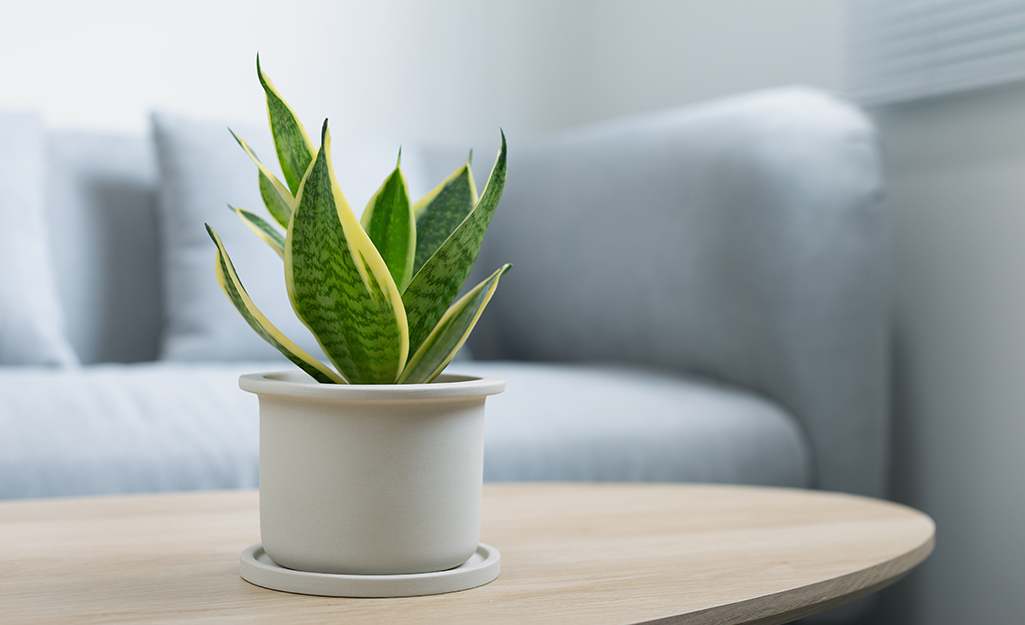
There are only a few rules when it comes to containers for your plants. Give the plant room to grow and make sure the pot drains. And since these are indoor pots, protect surfaces like floors and tables with planter saucers.
Some pots come without drainage holes. If they’re plastic or resin, it’s pretty easy to punch nail holes in the bottom of the pot. You can also use a fancy planter without a drainage hole as a cachepot and insert the plant into a plain nursery pot (with drainage holes).
Select good quality indoor potting soil for your plants. Different plants have different potting soil needs. For example, succulents need a cactus soil and orchids need a special orchid bark mix. Most tropical houseplants like a moisture-control potting mix that retains moisture and is well-draining.
Start a Houseplant Family
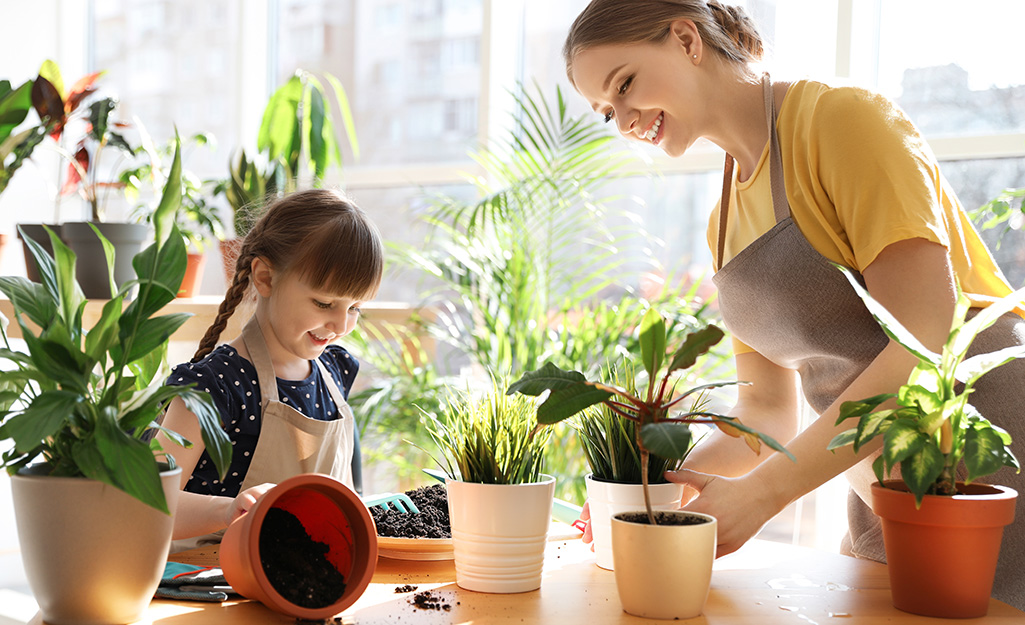
Plants are like people: they like to be around each other. In your home, build your indoor plant collection with easy-growing favorites like pilea peperomioides and golden pothos that you can propagate and share with friends.
Group houseplants that enjoy similar conditions together. Tropical houseplants will appreciate the filtered light and high humidity of a bathroom, and succulents will enjoy the bright light of an east-facing window.
Plants are easier to maintain when you have your tools and supplies at hand. Find a shelf in a utility room or garage where you can store fertilizer, hand tools like pruners and trowels, a watering can and plant mister.
Misting and Fertilizing Indoor Plants

Keep houseplants looking beautiful with routine care like watering, misting and fertilizing. Check the moisture level by touching the plant soil every few days. When the soil feels dry, water plants with a watering can or place them in a sink and let water run through the pot and drain.
To boost humidity, keep a spray bottle filled with water nearby and spray the leaves to keep them supple in dry interior spaces.
Get on a fertilizer routine with your houseplants. You can start with a half-strength dose, following package instructions.
Accessorize Your Houseplants
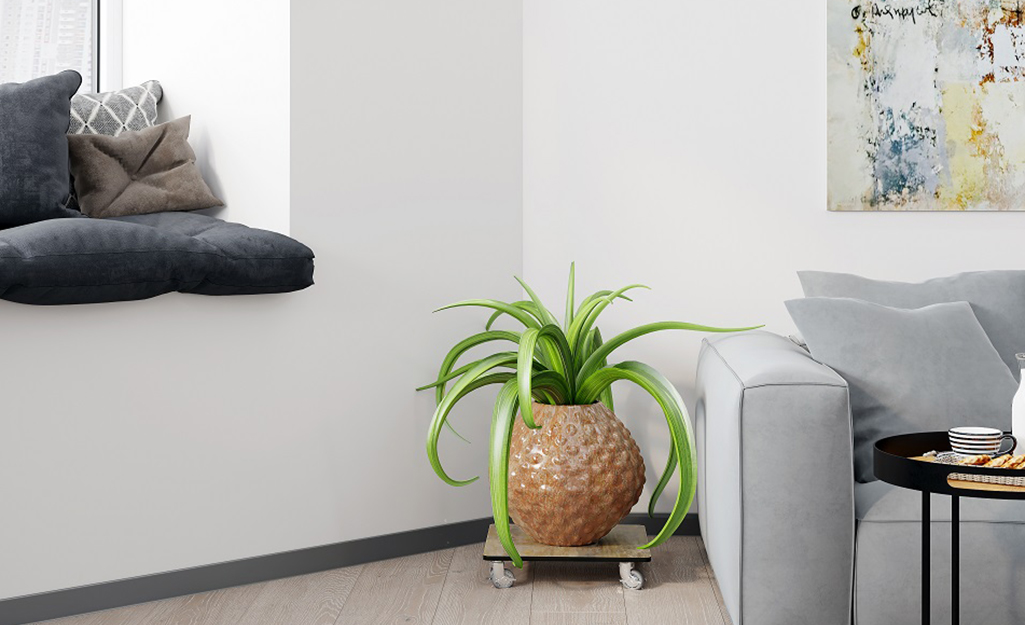
People like to say about fashion that accessories make an outfit. It's true for indoor plants, too. In the Garden Center, look for planter caddies that make moving heavy planters easier, planter saucers that will protect your floors and counters, and clay pot feet to elevate terra cotta pots.
To dress up your indoor plants, look to soil covers like moss and glass beads that add a decorative touch to your planters.
Whether you need the right planters, seeds or potting soil, The Home Depot delivers online orders when and where you need them.









